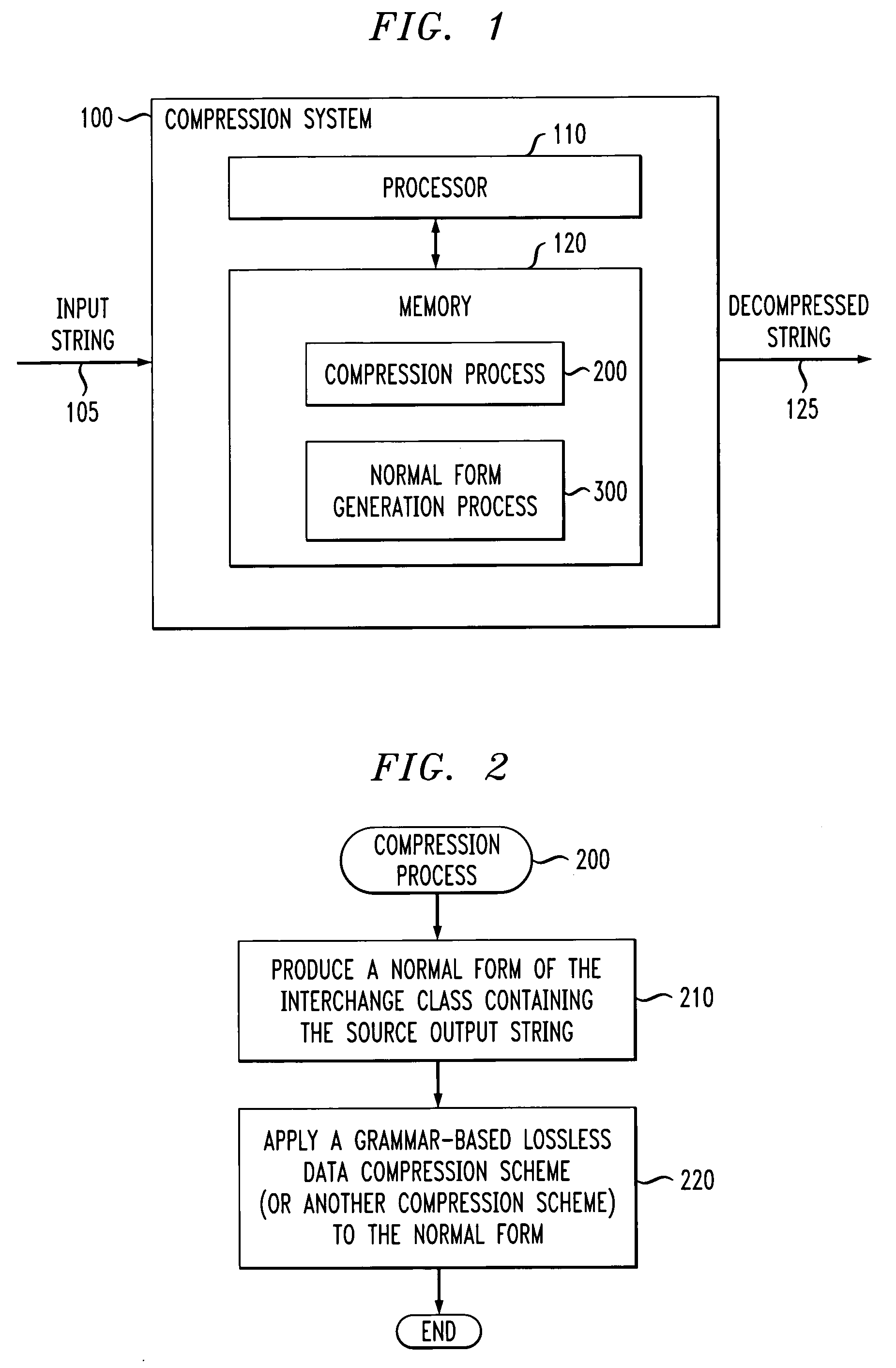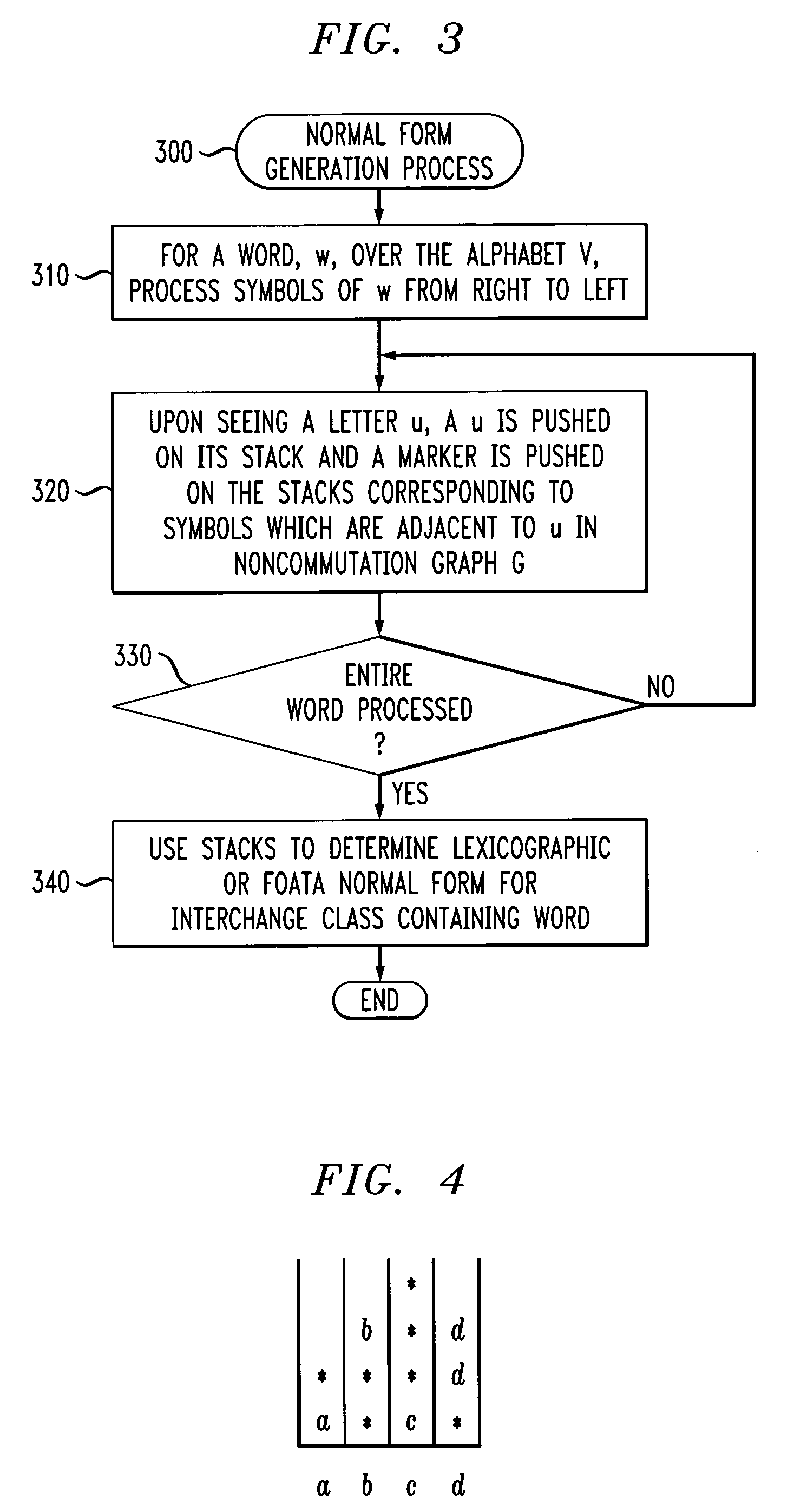Method and apparatus for compressing an input string to provide an equivalent decompressed output string
a compression method and input string technology, applied in the field of data compression techniques, can solve the problems of introducing certain inefficiencies in compression and delays
- Summary
- Abstract
- Description
- Claims
- Application Information
AI Technical Summary
Benefits of technology
Problems solved by technology
Method used
Image
Examples
Embodiment Construction
[0013]FIG. 1 illustrates a compression system 100 in which the present invention may be employed. As shown in FIG. 1, the exemplary compression system 100 includes a processor 110 and memory 120. According to one aspect of the invention, the compression system 100 compresses an input string 105 in a manner that an equivalent string 125 is produced upon decompression. As shown in FIG. 1, the memory 120 includes a compression process 200, discussed further below in conjunction with FIG. 2, and a normal form generation process 300, discussed further below in conjunction with FIG. 3, that may be employed by the compression process of FIG. 2.
[0014]The present invention provides compression algorithms based upon variations of a standard notion in trace theory known as normal forms. A normal form is a canonical representation of an interchange class. FIG. 2 is a flow chart describing an exemplary implementation of the compression process 200 of FIG. 1. Generally, the disclosed compression ...
PUM
 Login to View More
Login to View More Abstract
Description
Claims
Application Information
 Login to View More
Login to View More - R&D
- Intellectual Property
- Life Sciences
- Materials
- Tech Scout
- Unparalleled Data Quality
- Higher Quality Content
- 60% Fewer Hallucinations
Browse by: Latest US Patents, China's latest patents, Technical Efficacy Thesaurus, Application Domain, Technology Topic, Popular Technical Reports.
© 2025 PatSnap. All rights reserved.Legal|Privacy policy|Modern Slavery Act Transparency Statement|Sitemap|About US| Contact US: help@patsnap.com



